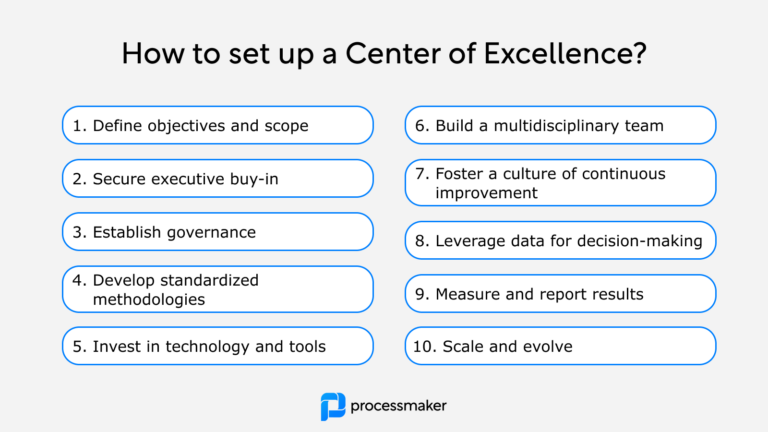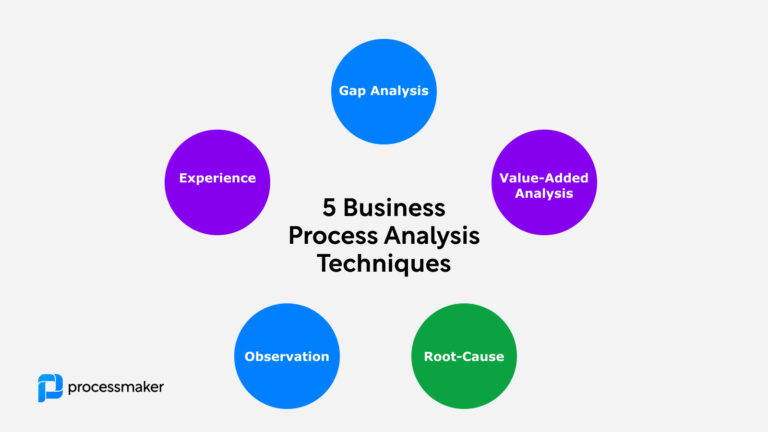An increasing number of organizations are embracing digital transformation. By deploying a business process management software, companies can further enhance their digital transformation process by using technology to improve product and service innovations, improving customer response times, and increasing operational efficiency.
When done right, and implemented thoughtfully, BPM can quickly improve agility, transferability, and repeatability of your processes. So then, many organizations may see how automating repeatable processes can shorten product time to market giving employees more lead time for fast responses to customer queries or even the ability to implement customizations with better speed.
Listed below are five key ways in which a BPM software can save an organization time and money while improving their overall organizational outcomes.
1. Process Organization within a singular software
It’s no secret that businesses often, regardless of their size or industry, have multiple complex workflows taking place at once. In fact, in 2018 a study conducted to analyze trends throughout industries undergoing BPM implementation found that more than 37% of companies surveyed reported having multiple of these high-level processes occurring at once. In terms of time savings, BPM can take various manual processes and facilitate unity via a singular platform to enhance organization unlike ever before.
By allocating so many moving parts towards a consolidated and organized platform, you can, therefore, reduce redundancy and automate manual tasks. Using a single platform facilitates the easy location of processes and eliminates confusion. In fact, every member of an organization can feel empowered by the ease of access to their improved processes and the time saved.
2. Continuous improvement with processes & workflows
Organizations can save time not only in terms of filing and organization due to BPM but also within the structuring of their workflows and task management activities. The automated monitoring that is factored into business process management software allows for waste, inefficiencies, and deviations from best practice workflows to be quickly identified and removed.
Constant monitoring also makes existing changes and areas for improvement more easily identifiable, thus saving time overall, which would have been previously spent identifying them.
Additionally, BPM enables employers to secure their workflows by streamlining associated management activities and enabling their repeatability. As errors arise, BPM software can help you identify them immediately and enhances visibility at both the operational and performance level.
In the digital era, technological developments are constantly evolving. With the constant influx of new and improved solutions and devices, organizations face an additional layer of complexity. Within the context of digital transformation, the adoption of a BPM software can address the following three activities:
-
-
- Continuous renewal and modification of processes due to increased complexity.
- The need for extensive collaboration, flexibility, and mobility.
- Improvement of relationships with customers, partners, and employees.
-
With BPM, companies can now spend less time managing and manually adjusting their workflows, and more time addressing their operational successes and overall performance to consistently meet their desired business objectives.
3. Eliminate costly errors
In addition to ensuring that errors are identified, BPM can also save more time by decreasing the occurrence or rapidity of human errors just through the increased presence of effective risk management that may otherwise have been previously lost in the flow of formerly unorganized processes.
When core processes are solidified and organized within a unified platform as previously mentioned, companies avoid errors in the first place rather than spending countless hours identifying and remedying such errors after they have already been made.
Employees may spend the time that they would have used to find and fix errors to instead increase their productivity and output, while also having the ability to focus on higher-level tasks. BPM can eliminate duplication errors as well, which involve employees possibly executing double the effort for only half of the results.
When companies move a process as close as possible to perfection, via BPM, and repeat the same process over and over, they can produce outstanding results with repeatable results.
While the digital era can make it more challenging to obtain process efficiency, you can align BPM practices to your digital transformation initiative. What happens then? Well, you simply maximize your digital business operations.
4. Automate analysis
Many organizations can and do waste substantial amounts of time outlining their workflows only to find them to be inefficient, not to standard, and leaving massive amounts of data both unmeasured and unmanaged. BPM enables the automation of management and measurement by automating analysis in the first place. In essence, companies can experience the benefit of automated study and identification of deviations from best practices within their business processes.
As a direct result, employees spend less time analyzing and open the door for more dedicated time towards modifying their processes to be closer to perfection. Further, the reduction of time spent searching for answers and analysis is advantageous from a client-related standpoint.
Companies benefiting from the analysis time reduction, by using business process management softwares, now have more time on their hands to prioritize client response in terms of the time it takes to respond which can improve the quality/relevancy of the response.
5. Enhance employee experiences
As companies experience the many benefits of automation, their employees may have an increased visibility of even the smallest wins. For instance, companies can report large scale wins of output, enhanced client relations, and even departmental developments on a regular and automated basis. As employees see this visible success, it can improve morale.
Moreover, employees will appreciate that they can spend less time discussing and analyzing the logistics of their current processes and workflows. Instead, employees are at liberty to do what they do best.
This process is critical to business success and assuring happier employees who are then more likely to stay with the organization. Another result is improved staff morale can reduce the overall time spent needed to compensate for turnover and training. Business process management also holds employees accountable and reliable by outlining a clear and consistently managed process. Such a process creates associated autonomy with relevant encouragement to meet clear expectations. So then, this can create the foundation for supporting better employee experiences.
Final thought
As you can see, BPM demonstrates compound which can save both time and money for organizations with inefficient processes and workflows. Through the enhanced organization, streamlined workflows, elimination of errors, automated analysis, and better employee experience, BPM empowers organizations to produce heightened outcomes.
In terms of digital transformation, organizations can receive the perks of BPM’s ability to deliver on specific benefits such as agility while making a positive impact on customer service and customer-focused decision making.
Written by Katherine Manning





